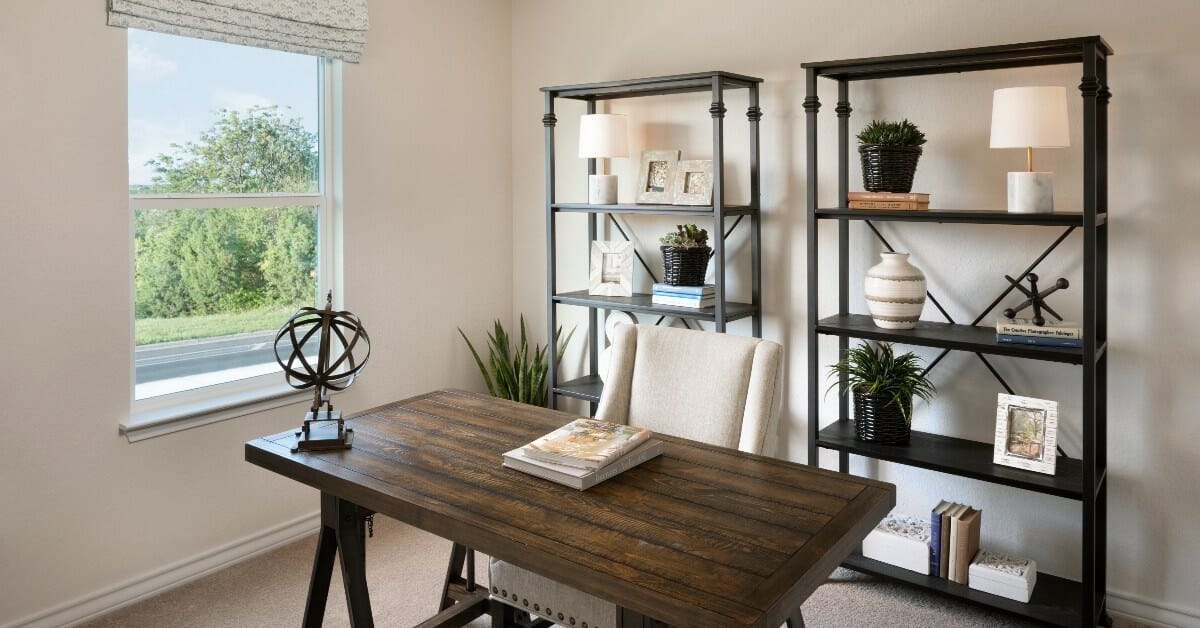An Additional Dwelling Unit (ADU) is like a mini-home on your property. It has everything you need—kitchen, bathroom, and living space. You can call it a smaller version of your main house. On the other hand, a backyard studio is more of a dedicated workspace.
It’s more suitable for things like a home office, art studio, or workout room. You are not going to have full amenities for living in this place. It is important for you to know the difference between these two so that you can save time, money, and a lot of headaches.
In this article, you will get to know the key differences between an additional dwelling unit (ADU) and a backyard studio. Do you want extra rental income or just a quiet place to work? Let me help you make the best choice for your needs.
Additional Dwelling Unit (ADU)
A self-sufficient Additional Dwelling Unit (ADU) is a fully independent housing option on the same property as your main home. Unlike most backyard studios, an ADU has everything a person needs—a kitchen, bathroom, living area, and its own entrance. This makes it perfect for tenants or adult children seeking privacy while staying close.
While more costly than a simple backyard studio, an ADU can actually help pay for itself over time. Renting it out can generate extra income that could even go toward mortgage payments. For homeowners considering adding such a unit, options like an insulated glass room for your garden can offer valuable additional space with durability and energy efficiency.
Some even choose a Duramax insulated garden room as part of the ADU’s layout or to complement the main living area. Besides housing tenants or family members, a self-sufficient ADU is versatile enough to serve as a comfortable home office. This private, and fully-equipped space can be a game-changer for both income potential and lifestyle.
The Accessory Dwelling Unit (ADU) market is growing fast. It was worth about $16.5 billion in 2023 and is expected to reach $18 billion in 2024. By 2032, it could be nearly $36.3 billion. More people want ADUs because they need affordable homes and it’s getting easier to build them.
Backyard Studio
A versatile and private backyard studio can be the perfect escape for productivity and creativity. Whether you’re a remote worker, artist, writer, or fitness enthusiast, it can be a dedicated space free from household distractions that makes a world of difference. You can work on your own garden glass room insulated building—a place designed just for focus and flow.
The key to this space is natural light and fresh backyard air. With wide windows and ventilation, an insulated garden room makes it ideal for every season. If you’re setting it up as a home office, this Duramax glass room offers just the right combination of peace and inspiration.
Artists and writers will love the open airy feel, while fitness enthusiasts can enjoy privacy with a refreshing view of the garden. You can also go for a garden glass room for all seasons which will allow you to enjoy the beauty of nature all year long.
The Backyard Studio market is growing too. It was worth about $2.9 billion in 2023 and is expected to reach $5.1 billion by 2032. More people want backyard studios because they like having fun and useful spaces outside their homes.
Main Differences of Additional Dwelling Unit (ADU) and a Backyard Studio
When planning an extra space on your property, it’s essential to understand the main differences between an Additional Dwelling Unit (ADU) and a backyard studio. Each serves unique purposes and comes with its own set of benefits, costs, and maintenance needs. Let’s take a closer look at the main differences.
Purpose and Functionality
An Accessory Dwelling Unit (ADU) is essentially a self-contained, and fully functional home on the same property as the main house. It includes a kitchen, bathroom, and living area, which make it suitable for tenants or family members looking for independent living space.
On the other hand, a backyard studio is a non-residential space often used for a home office, art studio, or fitness room. This type of setup lacks residential amenities like a kitchen or bathroom.
So, it is meant for work or hobbies, but not long-term living. If you’re considering a top garden glass room building, a backyard studio can provide functional space without the need for full home facilities.
Size and Design Complexity
ADUs are larger and more complex than backyard studios. It often reaches up to 1,200 square feet. With multiple rooms, they require more extensive design and planning to accommodate residential needs. However, backyard studios are typically single-room structures designed with simplicity in mind.
They’re often small and meant for specific purposes like an insulated garden building or a high-quality garden glass room for art and office use. The backyard studio keeps things simple both in terms of design and function.
Utility Connections
ADUs typically come with full utility hookups including electricity, plumbing, and sometimes even gas. Since they are meant for living, these utilities are essential. But integrating them into the main property’s systems can be both complex and pricey.
On the other hand, Backyard Studios require only basic electric wiring. This space is mostly used for work or creative space rather than living. Some even operate off-grid with solar panels.
These things make them cheaper and simpler to install for utility connections. So, if you’re looking to keep installation straightforward and costs down, a Backyard Studio has the edge here.
Maintenance and Upkeep Requirements
An ADU demands regular maintenance just like a traditional home. With plumbing, electrical systems, and living spaces, it requires ongoing attention to stay in good condition. By contrast, a backyard studio, without many utilities, needs far less upkeep.
A Duramax garden room building or glass garden room by Duramax can be a great option if you’re looking for a low-maintenance workspace. With fewer facilities, upkeep becomes a minimal concern in most backyard studios.
Financing Options
They have a wider range of financing options because ADUs are designed as living spaces. Homeowners may use home equity loans, construction loans, or even specialized ADU financing programs to cover costs.
In California, homeowners can receive up to $40,000 in grants for pre-construction ADU expenses, which is a big help for those facing initial costs. However, Backyard Studios doesn’t get as much financial support because they aren’t considered residential spaces.
As a result, financing often falls to personal loans or savings. You may find them even more challenging to fund than ADUs. But you still go with a backyard studio as the building cost is going to be one-third of the ADUs.
Potential for Rental Income
One significant advantage of an ADU is its rental income potential. Because it’s a fully functional living space, you can rent it out to help offset mortgage costs. In contrast, a backyard studio isn’t suitable for rental since it lacks residential amenities.
While it’s perfect for a glass room for backyard use as a creative or functional retreat, it is not ideal as a living space for tenants. So, no rental income is going to come from the backyard studio in most cases.
Construction Costs and Timeframes
An ADU involves a substantial financial commitment with costs ranging from $60,000 to $285,000. The attached ADUs have the lowest cost range compared to the detached ADUs. Besides, construction can also take several months.
On the other hand, backyard studios are generally quicker and cheaper to build. A DIY studio could start at $2,000, while a garden room insulated building with customization can range from $25,000 to $100,000. These structures are often ready in a fraction of the time required for an ADU.
Parking Requirements
ADUs are classified as livable spaces, which means they can trigger municipal parking requirements. Some areas have relaxed these mandates, especially near public transit. But it is still something to consider.
On the other hand, Backyard Studios dodge these requirements since they aren’t meant for full-time living. With no parking mandates and a smaller footprint, Backyard Studios are easier on both your wallet and your property layout.
Environmental Impact
ADUs generally carry a larger environmental impact due to the materials, utilities, and energy needed for a livable space. Although choosing eco-friendly materials and energy-efficient appliances can help, an ADU will still likely have a greater footprint than a Backyard Studio.
Backyard Studios tend to leave a lighter environmental footprint. Their energy needs can often be met with solar panels, which makes them an ideal choice for those looking to go green.
Besides, a study by the Urban Land Institute finds that ADUs and Backyard Studio can significantly increase housing supply in urban areas and reduce footprint.
How to choose between a Backyard Studio and an Additional Dwelling Unit (ADU)?
When deciding between a backyard studio and an Additional Dwelling Unit (ADU), you need to consider your primary needs, budget, and timeline. Each offers unique benefits but serves different purposes. Here’s how to make the right choice.
Choose a Backyard Studio if:
- You need non-residential space like a home office, art studio, yoga room, or workshop.
- Your budget is limited, and you prefer a more affordable option. A premium insulated garden room or stylish insulated glass room is often more budget-friendly and quicker to build than an ADU.
- In many locations, small backyard studios don’t require building permits, which can save time and reduce hassles.
A backyard studio is a fantastic choice for those wanting a dedicated workspace or hobby room without investing heavily or adding extensive amenities.
Choose an Additional Dwelling Unit (ADU) if:
- You’re looking for a fully functional living space with a kitchen, bathroom, and living area.
- You’d like to generate extra income by renting it out, which can help cover mortgage payments.
- You’re interested in increasing your property’s value, as an ADU is a major asset.
- You don’t mind the higher cost and extended timeline, as well as obtaining permits to meet local building regulations.
Final Verdict
If you’re deciding between a backyard studio and an Additional Dwelling Unit (ADU), you need to think about your needs and budget. An ADU is a mini-home with a kitchen, bathroom, and living space, which is perfect for renting out or increasing property value. It is pricier and needs permits but adds great value. However, a backyard studio is a simpler choice.
You also have multiple ready-to-install backyard studios like Duramax glass building for your garden which can make a cozy space for work, art, or workouts. It’s budget-friendly, quick to build, and doesn’t need full home amenities. Each has its perks, so go with what best suits your plans.




